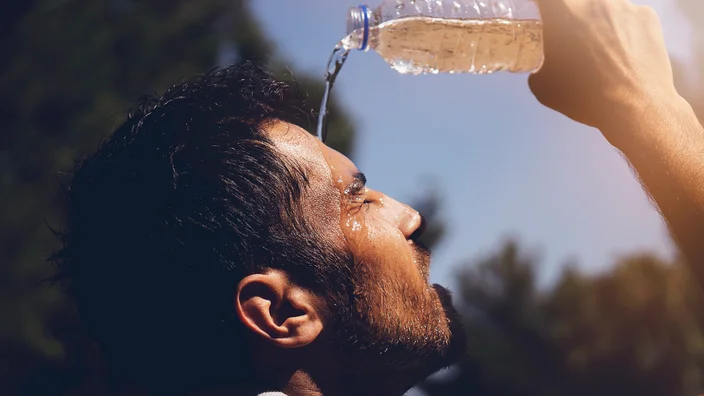Heat Stroke: Symptoms And Precautions
Do you spend most of your time outdoors? If yes, you could possibly be in danger of a heat stroke. Yes, you heard it right. As summer reaches its peak, so do the heat-related problems. Among them, heat stroke stands out as the most severe.
Remember, a heat stroke can lead to dire consequences. In severe cases, the victim may die. Therefore, you should have proper awareness about how to protect yourself from falling prey to extreme heat illness. However, do you know what it feels like to have a heat stroke?
If not, then don’t worry. In this article, we will familiarize you with the possible symptoms of heat stroke so that you can take action on time. Also, we will provide you with some effective precautions that can prove to be a shield against heat stroke. So, ready to dive in? Let’s roll.
Symptoms Of Heat Stroke
Getting familiar with the key symptoms of heat stroke enables you to avoid putting yourself in danger. Here are some of the most prominent indications that you should be mindful of:
- High body temperature: One of the major signs of heat stroke is elevated body temperature. It can rise up to 104°F (40°C) and even higher. This extreme increase in temperature requires immediate medical help.
- Strange mental state: After being affected by an extreme heat wave, your mental state may alter. If you don’t rush to cool down yourself, you might experience agitation and confusion. The worst overheating may bring severe mental issues.
- Fast breathing: When a heat spell attacks you, your breathing may get faster. Usually, people inadvertently start to breathe rapidly to cool off. However, fast breathing doesn’t help enough; rather, it may cause more problems.
- Rapid heartbeat: Another major indicator of being impacted by heat stroke is rapid heart rate. This racing heartbeat may put excessive strain on your heart. If you don’t get treated right away, you may experience a quick heart problem.
- Flushed skin: When your body gets exposed to intense heat, your skin may get affected by it. Your skin may turn red and feel hot to the touch because of increased blood flow to the surface as your body tries to cool down.
- Nausea: Feeling nauseous and starting to vomit is also one of the key indicators of heat stroke. It usually happens in response to severe heat stress. However, it may make your condition worse by further dehydrating you.
- Headache: While suffering from a heat-related illness, you often feel a severe headache. If you feel intense pain in your head after an outside activity in the summers, it is more likely that you are affected by heat waves.
- Unconsciousness: Remember, in extreme cases, you might lose consciousness. This usually happens when your body gets overloaded with heat. This is the worst situation that necessitates immediate treatment.
Precautions To Avoid Heat Stroke
When it comes to preventing heat stroke, you need to take effective proactive measures. Most people are not aware of what to do to avoid it. If you are also from them, don’t worry, the following precautions can help you stay safe.
Limit Your Outdoor Activities
When summers are at their peak, don’t spend more time outside unnecessarily. Instead of randomly doing outdoor visits, plan your physical activities. Prefer to go outside early in the morning or evening, as the temperature is usually cooler at these times. This significantly reduces the risk of having a heat stroke.
Try To Be Hydrated Properly
Staying hydrated is the best defense against heat stroke. With proper hydration, the body doesn’t lose control of its temperature. Therefore, make sure you drink plenty of water, juices, and other beneficial fluids on a daily basis. Remember, whenever your mouth gets dry, it is a sign that your body needs water.
Choose Appropriate Clothes
The right clothing keeps you safe from being affected by heat waves. On the other hand, inappropriate dresses may further increase the intensity of the heat. So, ensure that you wear clothes that you feel most comfortable in. Normally, loose, lightweight, and light-colored clothes, especially of cotton fabric, help your body stay cool.
Stay Informed Of Warnings
Staying informed about the upcoming weather enables you to be alert. That’s why, keep checking the weather forecast regularly. You can also follow the expert environment advisors on online platforms to get the latest information about heat waves. Make sure that you stay indoors during extreme heat warnings.
Cool Down Your Environment
Remember, the environment where you spend most of your time matters a lot. The more your surroundings are hot, the more susceptible you are to heat stroke. Therefore, keep your environment cool to prevent falling victim to extreme heat. For this purpose, you can capitalize on cooling appliances like fans, air coolers, and air conditioners.
Regularly Take Cool Showers
If you feel overwhelmed due to heat, taking showers can help you cool down. Rather than taking baths when necessary, make it a habit to pour cool water on your body regularly, especially after being outdoors in hot weather. This provides you with immediate relief from heat and reduces the risk of heat-related illness.
To Sum Up
To put it in a nutshell, heat stroke is a serious problem that can be prevented with proper precautions. After going through this article, we hope that you have now become familiar with the signs and safety measures for heat stroke. So from now on, stay vigilant to be protected.

